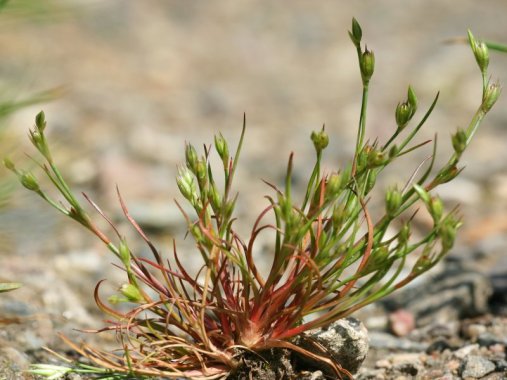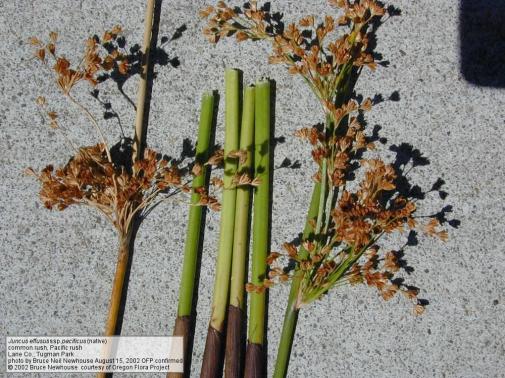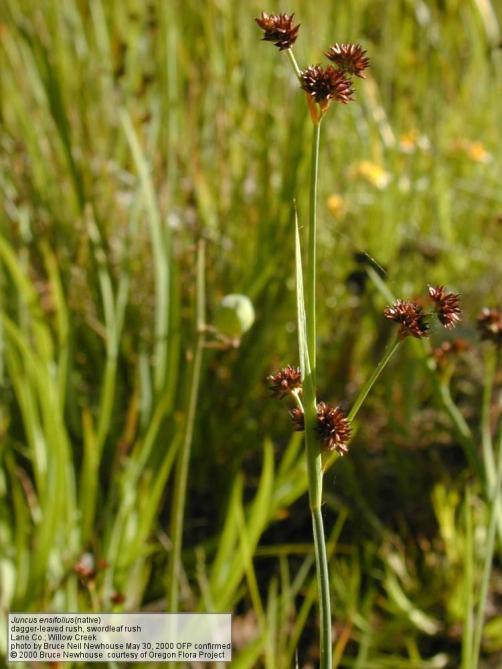Juncaceae – Rush Family
Consisting of perennial and some annual wetland graminoids, Juncaceae leaves are long and simple with parallel veins. What sets members of Juncaceae apart from those of Cyperaceae and true grasses, is that these leaves are usually hollow and round. In Willamette Valley Wetland Prairies though, two Juncus species actually have equitant, or Iris-like, leaf arrangement – Juncus oxymeris (Pointed Rush) and Juncus ensifolius (Dagger Leafed Rush).[1] These clump forming plants are usually rhizomatous and many have light to dark brown papery sheaths around the leaf base. There are seven genera and 350 species found globally, typically used as an indicator of wetland habitats or hydric soils.[2]
Unlike Sedges and Grasses, Juncaceae have true flowers, though you may need a magnifying glass to observe them in detail. Tiny flowers are similar to other monocots in that they are 3-merous (three sepals, three petals, six stamens) with a central pistil topped off with a three pronged stigma.[3] Inflorescences are mostly terminal or laterally emerging cymes that vary dramatically in shape and arrangement. The many species occurring in Willamette Valley wetland prairies vary in height and leaf color as well as habitat diversity reflecting adaptability across water gradients.
Juncus occidentalis – Western Rush
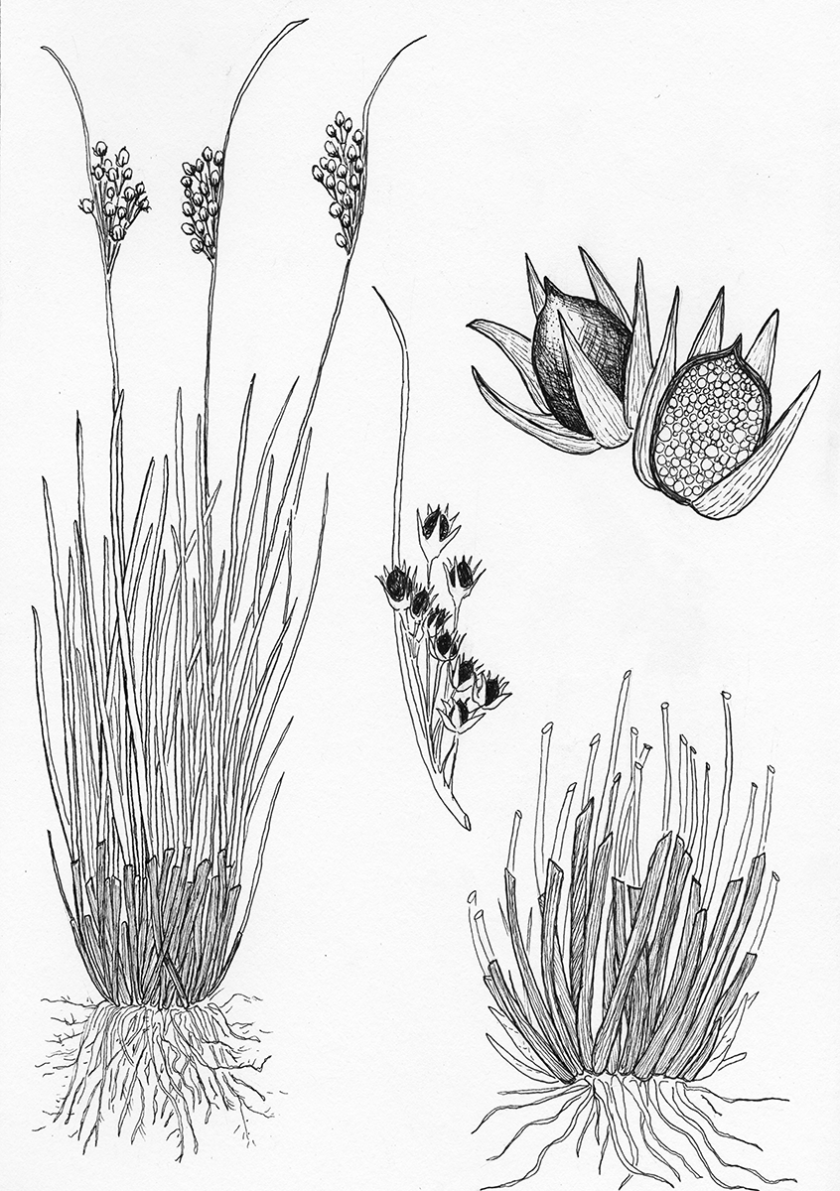
Species Code: JUOC
Habit: A bright green, dense growing tufted perennial rush. Bunched at the base with a fibrous root system. Measures approximately 15 to 60 cm tall at maturity, with 1 to 7 cm long, multi- branched inflorescence with 4 to 6 rounded terminal seed capsules per stem.[4]
Leaves: Narrow, round stems are only 1 to 3 mm wide, with no leaf blades. Auricles are white and membranous, 1 to 3.5 mm long, and appearing to be an overlapping continuation of the leaf sheath.[5]
Flowers: Diffuse, terminal inflorescences are 1-7 cm long and branched, bearing 10 to 50 single flowers. Six Tepals are 4 to 5 mm long, with green midribs and white margins.[6]
Fruits: Straw colored, oblong/oval shaped capsules contain many, tiny seeds that are dark brown when ripe.[7] Juncus occidentalis will not produce seed in its first year following germination. However, these plants are long-lived, can seed for more than five years, yielding dramatic numbers of seeds ranging from 300 to 900 lbs. per acre per year.[8]
Ecology: FACW, Facultative Wetland species, growing in wet, compacted, clay soils, shallow stream beds, wet road sides, or open lacustrine areas.[9]
Notes: J. occidentalis (formerly known as Juncus tenuis) requires hydric soils that are seasonally moist to semi-flooded.[10] J. occidentalis can reach high site cover even at very low seeding rates of 1 – 4 individual seeds per square foot.[11] Planners therefore use caution in sites where increased biodiversity is a management goal, but can be a valuable native species in sites where hydrophilic invasives pose a challenge, such as with Reed Canary Grass (Phalaris arundinacea).[12] In large natural resource areas, periodic, low intensity burns helped limit J. occidentalis dominance on the site level.[13]
Juncus acuminatus – Tapertip Rush
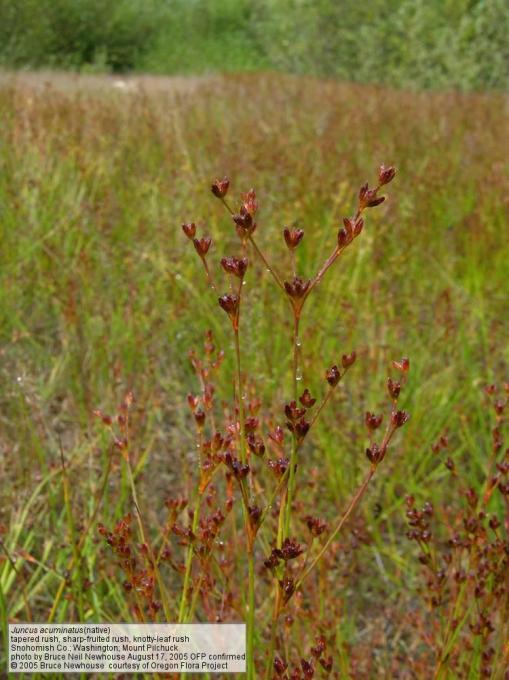
Juncus bolanderi – Bolander’s Rush
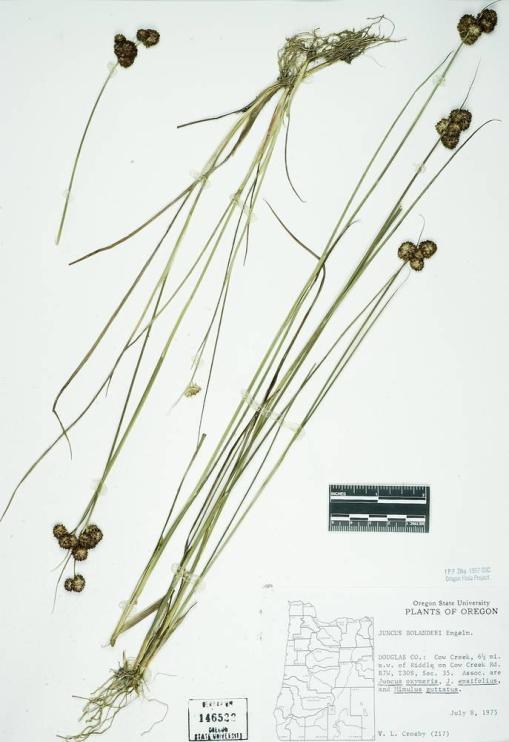
Juncus bufonius var. bufonius – Toad Rush
Juncus effusus ssp. Pacificus – Soft Rush
Juncus ensifolius – Swordleaf Rush
Juncus nevedensis – Nevada Rush
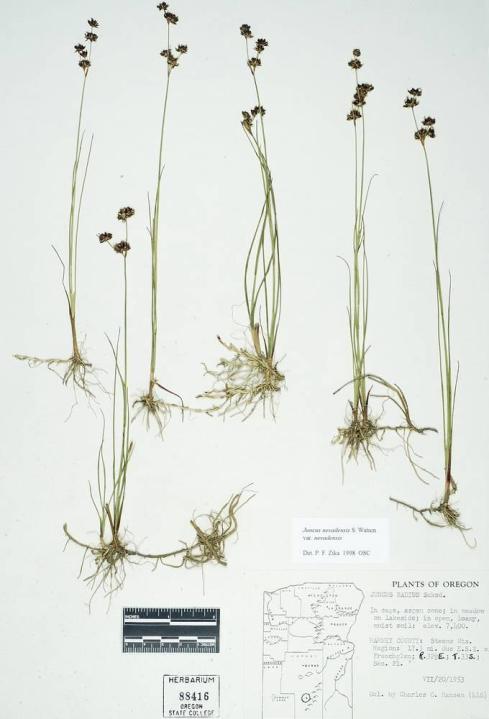
Juncus oxymeris – Pointed Rush
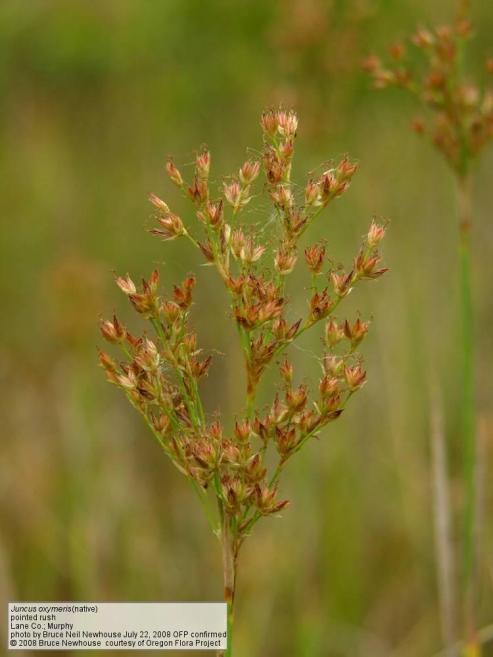
Juncus patens – Spreading Rush
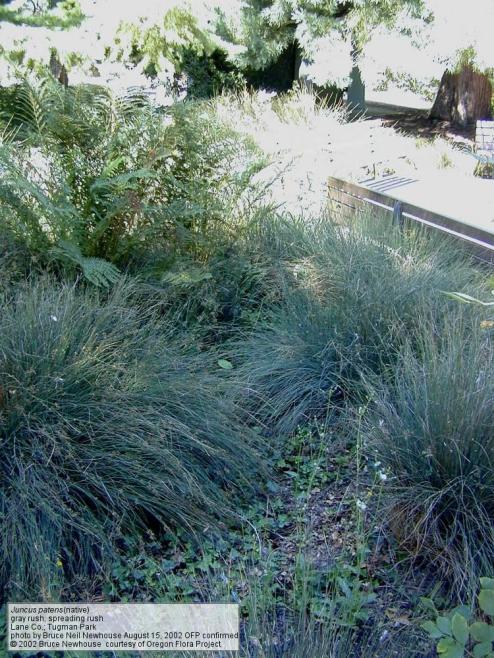
[1] Newhouse, Bruce. Comparison of Juncus spp. Found in the West Eugene Wetlands. 1995.
[2] Elpel, T. J., Botany in a Day: The Patterns Method of Plant Identification. HOPS Press, 2004. 159.
[3] Pojar, J., Mackinnon, A., Editors ) Plants of the Pacific Northwest Coast. Lone Pine Publishing, Vancouver, Canada. 2004.
[4] Pojar, J., Mackinnon, A., Ed., Plants of the Pacific Northwest Coast. Lone Pine Publishing, Vancouver, Canada. 2004.
[5] Guard, J. Wetland Plants of Oregon and Washington. Lone Pine Publishing, Edmonton, Alberta. 1995.
[6] City of Eugene, Seed Collection Manual, Juncus occidentalis, 2009.
[7] Flora of North America eFlora: < http://www.efloras.org/florataxon.aspx?flora_id=1&taxon_id=222000161>
[8] Wold, E., J. Jancaitis, T. Taylor and D Steeck (2011). Restoration of Agricultural Fields to Diverse Wet Prairie Plant Communities in the Willamette Valley, Oregon. Northwest Science, 85(2):269-287.
[9] USDA Plants Database: < https://plants.usda.gov/core/profile?symbol=JUOC2>
[10] Guard, J. Wetland Plants of Oregon and Washington. Lone Pine Publishing, Edmonton, Alberta. 1995.
[11] Krueger, J., Bois, S., Kaye, T., Steeck, D., Taylor, T., (2014). Practical Guidelines for Wetland Prairie Restoration in the Willamette Valley, Oregon: Field Tested Methods and Techniques. Lane Council of Governments, Institute for Applied Ecology, City of Eugene. 2014.
[12] Krueger, J., Bois, S., Kaye, T., Steeck, D., Taylor, T., (2014). Practical Guidelines for Wetland Prairie Restoration in the Willamette Valley, Oregon: Field Tested Methods and Techniques. Lane Council of Governments, Institute for Applied Ecology, City of Eugene. 2014.
[13] Wold, E., J. Jancaitis, T. Taylor and D Steeck (2011). Restoration of Agricultural Fields to Diverse Wet Prairie Plant Communities in the Willamette Valley, Oregon. Northwest Science, 85(2):269-287.

